Cortagen 20mg (10 vial kit)
Cortagen 20mg (10 vial kit)
Cortagen, is a bioregulatory peptide, that reverses aging effects by rejuvenating DNA reactivating silenced genes, and promoting nerve regeneration by enhancing the recovery of damaged peripheral nerves and stimulating nerve fiber growth. (PMID: 15159690, PMID: 11276314)
Cortagen Research Topics:
-
Reverses Aging Effects:
Cortagen helps rejuvenate DNA by reversing the condensation of chromatin, which allows the reactivation of genes that are silenced by aging. This process enhances cellular function and reduces cellular senescence. (PMID: 15159690)
-
Promotes Nerve Regeneration:
Cortagen enhances the structural and functional recovery of damaged peripheral nerves. It stimulates nerve fiber growth and improves nerve conduction velocity, which is crucial for effective nerve regeneration after injury. (PMID: 11276314)
Structure
Amino Acid Sequence: Ala-Glu-Asp-Pro {AEDP) Molecular Formula: C11H21NsOa
Molecular Weight: 430.17 g/mol
PubChem CID: 18439621
Synonyms: SCHEMBL5491754

Source: PepDraw
Cortagen and Aging
Research shows that gene expression patterns change as we age. In particular, levels of gene expression tend to drop, overall, as DNA condenses from the more open form of euchromatin into the more densely packed form called heterochromatin. This process of condensation inhibits DNA transcription factors from accessing certain genes and is one of the major contributors to the process of senescence (a type of cellular aging). Research shows that peptide bioregulators can help reverse condensation and restore cells to a more youthful state [2].
Cortagen has pronounced effects on both the structural and functional aspects of peripheral nerves as well as cardiac tissue. It was thought that this likely arose as a result of de-condensing chromatin structures. Scientists tested this hypothesis using transcriptome microarray analysis and found significant changes in 110 known genes scattered across more than 234 different DNA regions [3].
In a different experiment with similar goals, Cortagen was found to increase the activity of ribosome genes and to unpack chromatin fibrils in a way that released genes repressed as a result of age-specific condensation of chromatin [4]. This same decondensation of DNA is seen with other bioregulatory peptides, with each peptide having tissue-specific effects and few off-target effects [5].
Besides altering DNA structure and reactivating dormant genes, Cortagen also appears to affect aging by boosting the body’s natural anti-oxidative mechanisms. Research in rats shows that Cortagen decreases levels of LPO (lipid peroxidation) products. This reduces the number of proteins affected by pathological oxidation processes and suppresses antioxidant activity in both the blood and the brain [6]. Lipid peroxidation (LPO) is a form of free-radical mediated tissue injury that especially affects cell membranes in tissues with high levels of lipids. Lipids are abundant in the central nervous system where they act to insulate nerves. Oxidation of these lipids can lead to decreased nerve conductance and may be a contributor to neurodegenerative diseases like Alzheimer’s and Parkinson’s diseases.
Cortagen and Nerve Regeneration
Research in rats shows that a 10 microgram/kg intramuscular injection of Cortagen can increase the regeneration of nerve fibers in a transected curve by up to 40% [1]. This research suggests that surgical reconnection of a damaged nerve followed by injection of Cortagen could help to stimulate nerve repair and improve the results following serious spinal cord injury. This mechanism of action is likely similar to the repair-promoting mechanism of Cortagen in the brain. A balance between pro- and anti-inflammatory states has long been known to help promote healing in other tissues, so it seems reasonable to think that it has the same beneficial effects in the central nervous system.
Cortagen Summary
Cortagen is a bioregulatory peptide with primary effects on the brain and central nervous system. It has secondary effects on the immune system and in cardiac tissue. Research shows that it is a powerful regulator of the inflammatory response, particularly in the nervous system, helping to restore balance and proper functioning between pro- and antioxidative processes. It has been investigated as a potential treatment following ischemic brain injury where it and similar compounds have shown beneficial long-term results. Cortagen stimulates interleukin-2 expression and helps to regulate immune function primarily by reducing autoimmune reactions.
Article Author
The above literature was researched, edited, and organized by Dr. Logan, M.D. Dr. Logan holds a doctorate from Case Western Reserve University School of Medicine and a B.S. in molecular biology.
Scientific Journal Author
Vladimir Khavinson is a Professor, resident of the European region of the International Association of Gerontology and Geriatrics; Member of the Russian and Ukrainian Academies of Medical Sciences; Main gerontologist of the Health Committee of the Government of Saint Petersburg, Russia; Director of the Saint Petersburg Institute of Bioregulation and Gerontology; Vice president of Gerontological Society of the Russian Academy of Sciences; Head of the Chair of Gerontology and Geriatrics of the North-Western State Medical University, St-Petersburg; Colonel of medical service (USSR, Russia), retired. Vladimir Khavinson is known for the discovery, experimental, and clinical studies of new classes of peptide bioregulators as well as for the development of bioregulating peptide therapy. He is engaged in studying the role of peptides in the regulation of the mechanisms of ageing. His main field of action is the design, pre-clinical, and clinical studies of new peptide geroprotectors. A 40-year investigation resulted in a multitude of methods of application of peptide bioregulators to slow down the process of aging and increase human life span. Six peptide-based pharmaceuticals and 64 peptide food supplements have been introduced into clinical practice by V. Khavinson. He is an author of 196 patents (Russian and international) as well as of 775 scientific publications. His major achievements are presented in two books: “Peptides and Ageing” (NEL, 2002) and “Gerontological Aspects of Genome Peptide Regulation” (Karger AG, 2005). Vladimir Khavinson introduced the scientific specialty “Gerontology and Geriatrics” in the Russian Federation on the governmental level. Academic Council headed by V. Khavinson has oversight over 200 Ph.D. and Doctorate theses from many different countries.
Prof. Vladimir Khavinson is being referenced as one of the leading scientists involved in the research and development of Cortagen. In no way is this doctor/scientist endorsing or advocating the purchase, sale, or use of this product for any reason. There is no affiliation or relationship, implied or otherwise, between Life Link Research and this doctor. The purpose of citing the doctor is to acknowledge, recognize, and credit the exhaustive research and development efforts conducted by the scientists studying this peptide.
Referenced Citations
- L. N. Turchaninova. L. I. Kolosova. V. V. Malinin, A. B. Moiseeva, A. D. Nozdrachev, and V. K. Khavinson, “Effect of tetrapeptide cortagen on regeneration of sciatic nerve.” Bull. Ex12.. Biol. Med., vol. 130, no. 12, pp 1172-1174, Dec.2000.
- V. K. Khavinson, “Peptides and Ageing” Neuro Endocrinol. Lett., vol. 23 Suppl-:.11-144, 2002.
- S. V. Anisimov. V. K. Khavinson. and V. N Anisimov, “Elucidation of the effect of brain cortex tetrapeptide Cortagen on gene expression in mouse heart by microarray,” Neuro Endocrinol. Lett., vol. 25, no. 1-2. QR.:. 87-931 Apr. 2004.
- V. K. Khavinson. T. A. Lezhava, and V. V. Malinin. “Effects of short peptides on lymphocytes chromatin in senile subjects,” Bull. Exp. Biol. Med., vol. 137, no. 1, RR· 78- 81, Jan. 2004, doi: 10.1023lb:bebm.0000024393.40560.05.
- T. Lezhava, J. Monaselidze, T. Kadotani, N. Dvalishvili, and T. Buadze, “Anti-aging peptide bioregulators induce reactivation of chromatin,” Georgian Med. News, no. 133, pp. 111-115, Apr. 2006.
- L. S. Kozina, “Effects of bioactive tetrapeptides on free-radical processes,” Bull. Exe. Biol. Med .• vol. 143, no. 61 RR- 744-746, Jun. 2007, doi: 10.1007ls10517-007-0230-8.
- A. V. Gumen, I. A. Kozinets, S. N. Shanin, V. V. Malinin, and E. G. RY.bakina, “Production of lymphocyte-activating factors by mouse macrophages during aging and under the effect of short peptides,” Bull. Exe_. Biol. Med., vol. 142, no. 3, RR· 360-362, Sep. 2006, doi: 10.1007 /s10517-006-0366-y..:.
- T. B. Kazakova et al.”In vitro effect of short peptides on expression of interleukin-2 gene in splenocytes,” Bull. Exe. Biol. Med., vol. 133, no. 61 QR- 614-616, Jun. 2002, doi: 10.1023la:1020210615148.
- I. V. Zarubina and P. D. Shabanov, “[Cortexin and cortagen as correcting agents in functional and metabolic disorders in the brain in chronic ischemia],” Eksfl. Klin. Farmakol., vol. 74, no. 2, pp. 8-15, 2011.
- N. V. Gulyaeva, “[Molecular mechanisms of brain peptide containing drugs: cortexin],” Zh. Nevrol. Psikhiatr. Im. S. S. Korsakova, vol. 118, no. 10, pp. 93-96, 2018, doi:10.l 7116/jnevro201811810193.
- D. V. Kurkin et al., “Neuroprotective action of Cortexin, Cerebrolysin and Actovegin in acute or chronic brain ischemia in rats,” PloS One, vol. 16, no. 7,p. e0254493, 2021, doi: 10.1371/journal pone.0254493.
$470.00
Description
Cortagen, is a bioregulatory peptide, that reverses aging effects by rejuvenating DNA reactivating silenced genes, and promoting nerve regeneration by enhancing the recovery of damaged peripheral nerves and stimulating nerve fiber growth. (PMID: 15159690, PMID: 11276314)
Cortagen Research Topics:
-
Reverses Aging Effects:
Cortagen helps rejuvenate DNA by reversing the condensation of chromatin, which allows the reactivation of genes that are silenced by aging. This process enhances cellular function and reduces cellular senescence. (PMID: 15159690)
-
Promotes Nerve Regeneration:
Cortagen enhances the structural and functional recovery of damaged peripheral nerves. It stimulates nerve fiber growth and improves nerve conduction velocity, which is crucial for effective nerve regeneration after injury. (PMID: 11276314)
Structure
Amino Acid Sequence: Ala-Glu-Asp-Pro {AEDP) Molecular Formula: C11H21NsOa
Molecular Weight: 430.17 g/mol
PubChem CID: 18439621
Synonyms: SCHEMBL5491754

Source: PepDraw
Cortagen and Aging
Research shows that gene expression patterns change as we age. In particular, levels of gene expression tend to drop, overall, as DNA condenses from the more open form of euchromatin into the more densely packed form called heterochromatin. This process of condensation inhibits DNA transcription factors from accessing certain genes and is one of the major contributors to the process of senescence (a type of cellular aging). Research shows that peptide bioregulators can help reverse condensation and restore cells to a more youthful state [2].
Cortagen has pronounced effects on both the structural and functional aspects of peripheral nerves as well as cardiac tissue. It was thought that this likely arose as a result of de-condensing chromatin structures. Scientists tested this hypothesis using transcriptome microarray analysis and found significant changes in 110 known genes scattered across more than 234 different DNA regions [3].
In a different experiment with similar goals, Cortagen was found to increase the activity of ribosome genes and to unpack chromatin fibrils in a way that released genes repressed as a result of age-specific condensation of chromatin [4]. This same decondensation of DNA is seen with other bioregulatory peptides, with each peptide having tissue-specific effects and few off-target effects [5].
Besides altering DNA structure and reactivating dormant genes, Cortagen also appears to affect aging by boosting the body’s natural anti-oxidative mechanisms. Research in rats shows that Cortagen decreases levels of LPO (lipid peroxidation) products. This reduces the number of proteins affected by pathological oxidation processes and suppresses antioxidant activity in both the blood and the brain [6]. Lipid peroxidation (LPO) is a form of free-radical mediated tissue injury that especially affects cell membranes in tissues with high levels of lipids. Lipids are abundant in the central nervous system where they act to insulate nerves. Oxidation of these lipids can lead to decreased nerve conductance and may be a contributor to neurodegenerative diseases like Alzheimer’s and Parkinson’s diseases.
Cortagen and Nerve Regeneration
Research in rats shows that a 10 microgram/kg intramuscular injection of Cortagen can increase the regeneration of nerve fibers in a transected curve by up to 40% [1]. This research suggests that surgical reconnection of a damaged nerve followed by injection of Cortagen could help to stimulate nerve repair and improve the results following serious spinal cord injury. This mechanism of action is likely similar to the repair-promoting mechanism of Cortagen in the brain. A balance between pro- and anti-inflammatory states has long been known to help promote healing in other tissues, so it seems reasonable to think that it has the same beneficial effects in the central nervous system.
Cortagen Summary
Cortagen is a bioregulatory peptide with primary effects on the brain and central nervous system. It has secondary effects on the immune system and in cardiac tissue. Research shows that it is a powerful regulator of the inflammatory response, particularly in the nervous system, helping to restore balance and proper functioning between pro- and antioxidative processes. It has been investigated as a potential treatment following ischemic brain injury where it and similar compounds have shown beneficial long-term results. Cortagen stimulates interleukin-2 expression and helps to regulate immune function primarily by reducing autoimmune reactions.
Article Author
The above literature was researched, edited, and organized by Dr. Logan, M.D. Dr. Logan holds a doctorate from Case Western Reserve University School of Medicine and a B.S. in molecular biology.
Scientific Journal Author
Vladimir Khavinson is a Professor, resident of the European region of the International Association of Gerontology and Geriatrics; Member of the Russian and Ukrainian Academies of Medical Sciences; Main gerontologist of the Health Committee of the Government of Saint Petersburg, Russia; Director of the Saint Petersburg Institute of Bioregulation and Gerontology; Vice president of Gerontological Society of the Russian Academy of Sciences; Head of the Chair of Gerontology and Geriatrics of the North-Western State Medical University, St-Petersburg; Colonel of medical service (USSR, Russia), retired. Vladimir Khavinson is known for the discovery, experimental, and clinical studies of new classes of peptide bioregulators as well as for the development of bioregulating peptide therapy. He is engaged in studying the role of peptides in the regulation of the mechanisms of ageing. His main field of action is the design, pre-clinical, and clinical studies of new peptide geroprotectors. A 40-year investigation resulted in a multitude of methods of application of peptide bioregulators to slow down the process of aging and increase human life span. Six peptide-based pharmaceuticals and 64 peptide food supplements have been introduced into clinical practice by V. Khavinson. He is an author of 196 patents (Russian and international) as well as of 775 scientific publications. His major achievements are presented in two books: “Peptides and Ageing” (NEL, 2002) and “Gerontological Aspects of Genome Peptide Regulation” (Karger AG, 2005). Vladimir Khavinson introduced the scientific specialty “Gerontology and Geriatrics” in the Russian Federation on the governmental level. Academic Council headed by V. Khavinson has oversight over 200 Ph.D. and Doctorate theses from many different countries.
Prof. Vladimir Khavinson is being referenced as one of the leading scientists involved in the research and development of Cortagen. In no way is this doctor/scientist endorsing or advocating the purchase, sale, or use of this product for any reason. There is no affiliation or relationship, implied or otherwise, between Life Link Research and this doctor. The purpose of citing the doctor is to acknowledge, recognize, and credit the exhaustive research and development efforts conducted by the scientists studying this peptide.
Referenced Citations
- L. N. Turchaninova. L. I. Kolosova. V. V. Malinin, A. B. Moiseeva, A. D. Nozdrachev, and V. K. Khavinson, “Effect of tetrapeptide cortagen on regeneration of sciatic nerve.” Bull. Ex12.. Biol. Med., vol. 130, no. 12, pp 1172-1174, Dec.2000.
- V. K. Khavinson, “Peptides and Ageing” Neuro Endocrinol. Lett., vol. 23 Suppl-:.11-144, 2002.
- S. V. Anisimov. V. K. Khavinson. and V. N Anisimov, “Elucidation of the effect of brain cortex tetrapeptide Cortagen on gene expression in mouse heart by microarray,” Neuro Endocrinol. Lett., vol. 25, no. 1-2. QR.:. 87-931 Apr. 2004.
- V. K. Khavinson. T. A. Lezhava, and V. V. Malinin. “Effects of short peptides on lymphocytes chromatin in senile subjects,” Bull. Exp. Biol. Med., vol. 137, no. 1, RR· 78- 81, Jan. 2004, doi: 10.1023lb:bebm.0000024393.40560.05.
- T. Lezhava, J. Monaselidze, T. Kadotani, N. Dvalishvili, and T. Buadze, “Anti-aging peptide bioregulators induce reactivation of chromatin,” Georgian Med. News, no. 133, pp. 111-115, Apr. 2006.
- L. S. Kozina, “Effects of bioactive tetrapeptides on free-radical processes,” Bull. Exe. Biol. Med .• vol. 143, no. 61 RR- 744-746, Jun. 2007, doi: 10.1007ls10517-007-0230-8.
- A. V. Gumen, I. A. Kozinets, S. N. Shanin, V. V. Malinin, and E. G. RY.bakina, “Production of lymphocyte-activating factors by mouse macrophages during aging and under the effect of short peptides,” Bull. Exe_. Biol. Med., vol. 142, no. 3, RR· 360-362, Sep. 2006, doi: 10.1007 /s10517-006-0366-y..:.
- T. B. Kazakova et al.”In vitro effect of short peptides on expression of interleukin-2 gene in splenocytes,” Bull. Exe. Biol. Med., vol. 133, no. 61 QR- 614-616, Jun. 2002, doi: 10.1023la:1020210615148.
- I. V. Zarubina and P. D. Shabanov, “[Cortexin and cortagen as correcting agents in functional and metabolic disorders in the brain in chronic ischemia],” Eksfl. Klin. Farmakol., vol. 74, no. 2, pp. 8-15, 2011.
- N. V. Gulyaeva, “[Molecular mechanisms of brain peptide containing drugs: cortexin],” Zh. Nevrol. Psikhiatr. Im. S. S. Korsakova, vol. 118, no. 10, pp. 93-96, 2018, doi:10.l 7116/jnevro201811810193.
- D. V. Kurkin et al., “Neuroprotective action of Cortexin, Cerebrolysin and Actovegin in acute or chronic brain ischemia in rats,” PloS One, vol. 16, no. 7,p. e0254493, 2021, doi: 10.1371/journal pone.0254493.




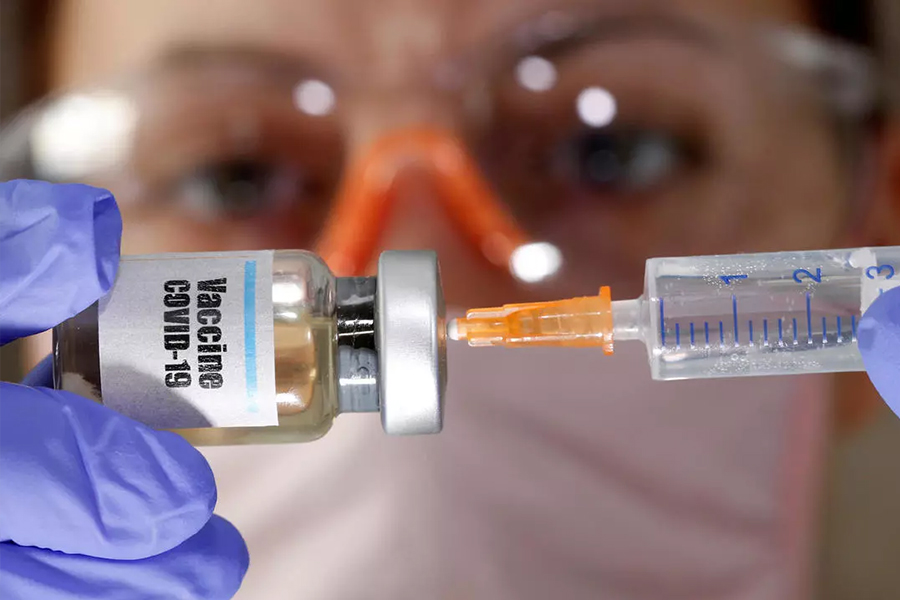

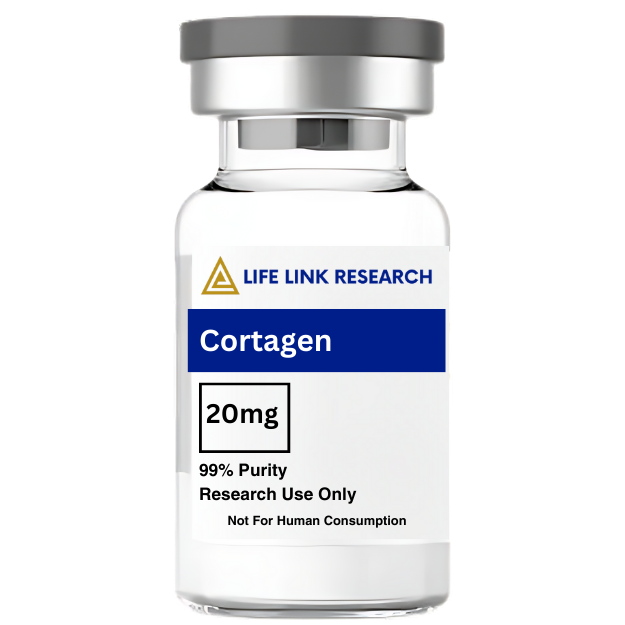
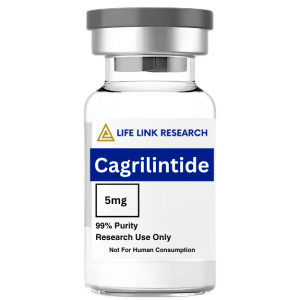

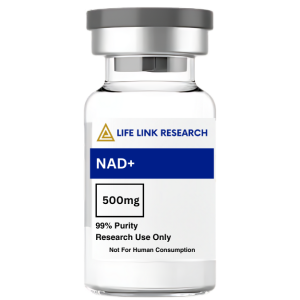
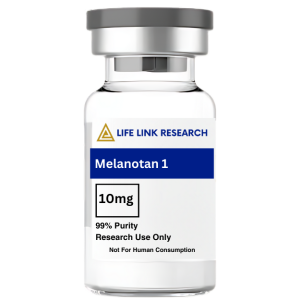
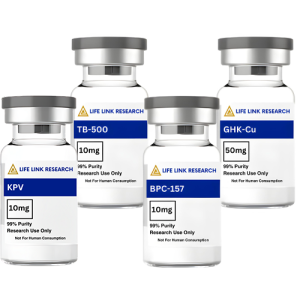
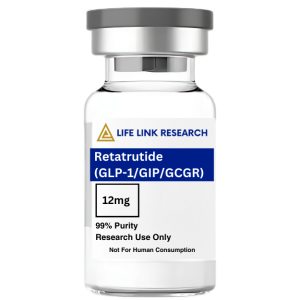


Reviews
There are no reviews yet.